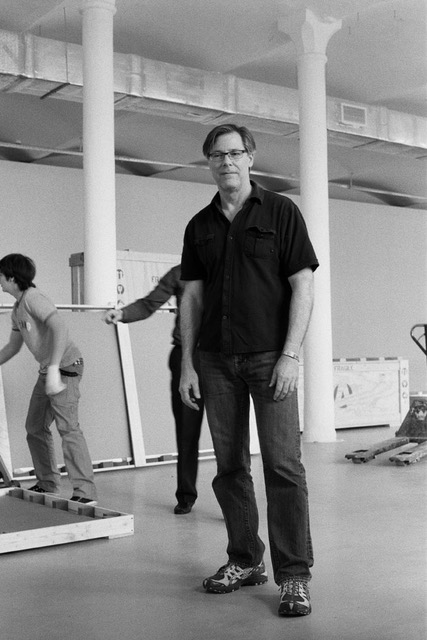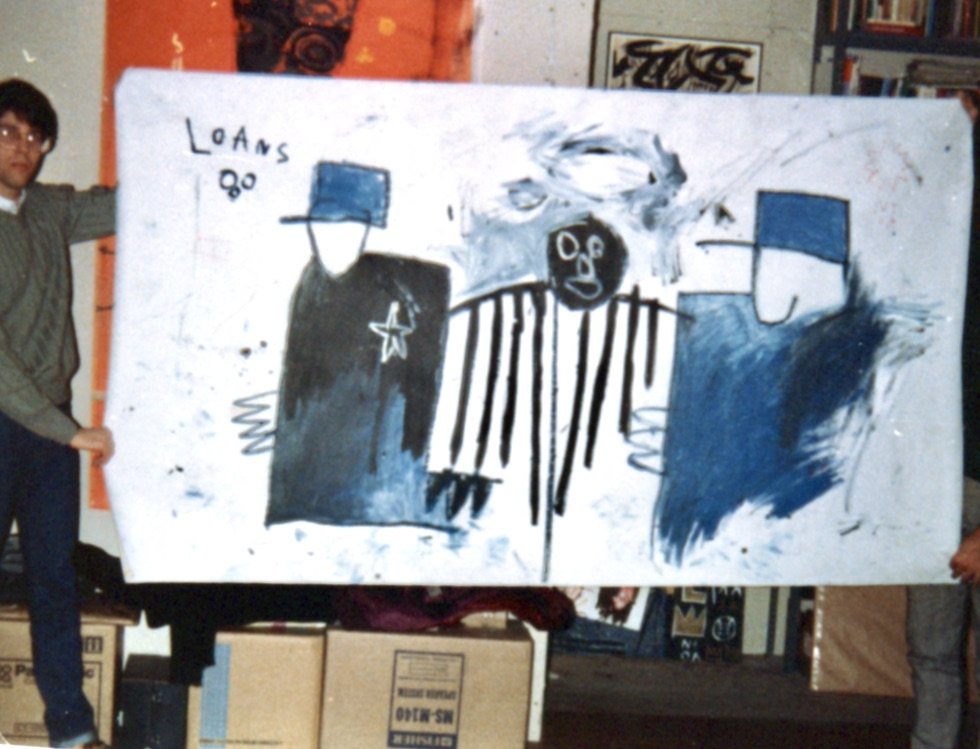partner profiles
Gregory Linn
Gregory Linn, Moscow.
©2018 Walead Beshty, courtesy of the artist.
Since 1980, Greg has been active in the contemporary art market in the United States and Europe. He first began collecting art in Chicago. Shortly thereafter, he became involved with national and international galleries, first via the first annual Art Chicago fair, and then by frequent travel to New York and Los Angeles.
His initial exposure to art was at Western Illinois University, where he first took a 20th century art history survey course as an elective. The course was taught by a practicing artist graduate student. He gave his students two grading options: a final exam or a project. Greg chose to make a Super 8mm film at an abandoned strip mine. He gathered a few friends and filmed them wandering around aimlessly zombie style. He got an “A” for his “breakthrough” film, even though he knew nothing of conceptual art or avant-garde and experimental films of the 1970s.
Greg landed in Chicago working in IT. He began developing his art intelligence in local galleries and museums. Within a year, he and his partner (Clayton Press) began traveling to New York almost monthly. They were denizens of the East Village and West Broadway, and several artists and curators became friends. Greg and Clay made their observational switches early on. In 1981, for example, he and Clay had back-to-back studio visits with Keith Haring and Jean-Michel Basquiat’s agent, Diego Cortez. Both artists offered them works directly from the studio for $800. They declined. No regrets. (The untitled Basquiat pictured below sold for $9.1 million in 2014.)
Lafreniere, Steve, ed. Hello, We Were Talking About Hudson. Chicago, IL: Soberscove Press, 2024.
When the Chicago gallery Feature Inc. opened in April 1, 1984, Greg and Clay became its first clients, buying two photographs by Richard Prince. The gallery’s mononymous owner—Hudson—introduced the couple to a range of artists and dealers in New York (for example, 303 Gallery, American Fine Arts, Cable Gallery, and Metro Pictures) and in Los Angeles (Burnett Miller, Richard Kuhlenschmidt, Margo Leavin, and Regen Projects.) Greg and Clay’s collecting interests and zeal changed rapidly and radically. In 1985, Greg and Clay relocated to Los Angeles, where they co-founded New Strategies, one of the first of the “salon-style” galleries in the evolving contemporary art scene in Southern California. New Strategies was the first gallery to present the work of Richard Prince, Larry Johnson, and Andres Serrano in Los Angeles.
Greg moved to London in 1990, where he volunteered for Maureen Paley’s Interim Art and the Terrence Higgins Trust. He toyed with the idea of becoming an artist and attending Goldsmiths' College, London’s most progressive art program. He lost momentum with the daunting task of developing a portfolio. He relationships focused on galleries, curators, and artists in Europe. During the annual Art Basel fair, he invariably visited Swiss museums and Kunsthallen, the most frequent and important of which was Die Hallen für Neue Kunst in Schaffhausen. This collection and its dedication to large-scale, artist-co-curated installations fundamentally changed his ideas about and approach to collecting.
Returning to New York in 1993, he was the first employee of David Zwirner Gallery, before joining the marketing department of the Philadelphia Museum of Art. There, Gregory was among the pioneers of web-based marketing and participated in the American Alliance of Museums' "digital museum" discussion group, the Art Museum Image Consortium (AMICO). In 2003 Gregory founded linn press | specialists in contemporary art. He also become the primary North American partner in one of the earliest pioneers of Internet art retailing. Working with Florian Baron, a former Senior Director at Galerie Christian Nagle, the company—The Spotlist—sold excess artist inventory held by German galleries. By 2007, the company expanded to become a collector-to-collector reseller, with clients in such diverse locations as Dubai, Cologne, London, and San Francisco. Named the Collectors’ Spot, it ceased operations with the growth of linn press.
Gregory Linn with Diego Cortez holding Jean-Michel Basquiat, Untitled, acrylic, oilstick on canvas, 1981.
Charles Demuth, I Saw the Figure 5 in Gold, oil, graphite, ink, and gold leaf on paperboard (Upson board), 1928. Image, The Metropolitan Museum of Art, New York.
In spring 2009, linn press was invited to be guest curators of ПЯТь {FIVE}, at BAIBAKOV art projects (Moscow). Charles Demuth’s multimedia work I Saw the Figure 5 in Gold was the inspiration for the exhibition. This was the first in-depth presentation of work in Russia by then-emerging American artists Walead Beshty, Matthew Brannon, Wade Guyton, Sterling Ruby, and Kelley Walker. “The exhibition considered the contemporary relevance of these artists, while establishing their work within the context of a specifically American artistic lineage, rooted in the moment of American Modernism.” Specifically, it contrasted them with Donald Judd, Robert Indiana, Ed Ruscha, Richard Serra and Andy Warhol. Since 2009, Greg has helped to organize numerous exhibitions in Antwerp, Chicago, Los Angeles, Miami Beach, and New York. Greg also manages several key client relationships in the United States, Mexico, South Korea, and France/Austria. He is also responsible for quantitative and qualitative research for client purchases and market and insurance valuations.
Greg is a member of the William Society at The Metropolitan Museum of Art, as well as The New Century Club and Legacy Society of The Art Institute of Chicago. He has also been a benefactor to The Art Institute of Chicago, City of Chicago (Department of Cultural Affairs), Los Angeles Museum of Contemporary Art, The Metropolitan Museum of Art, The National Gallery of Australia (Canberra), Philadelphia Museum of Art, Princeton University Art Museum, and Whitney Museum of American Art.
Gregory graduated from Western Illinois University, concentrating in business and marketing. He has served on the boards of the SculptureCenter (Long Island City, New York) and the Arcadia University Art Gallery (Glenside, Pennsylvania).



